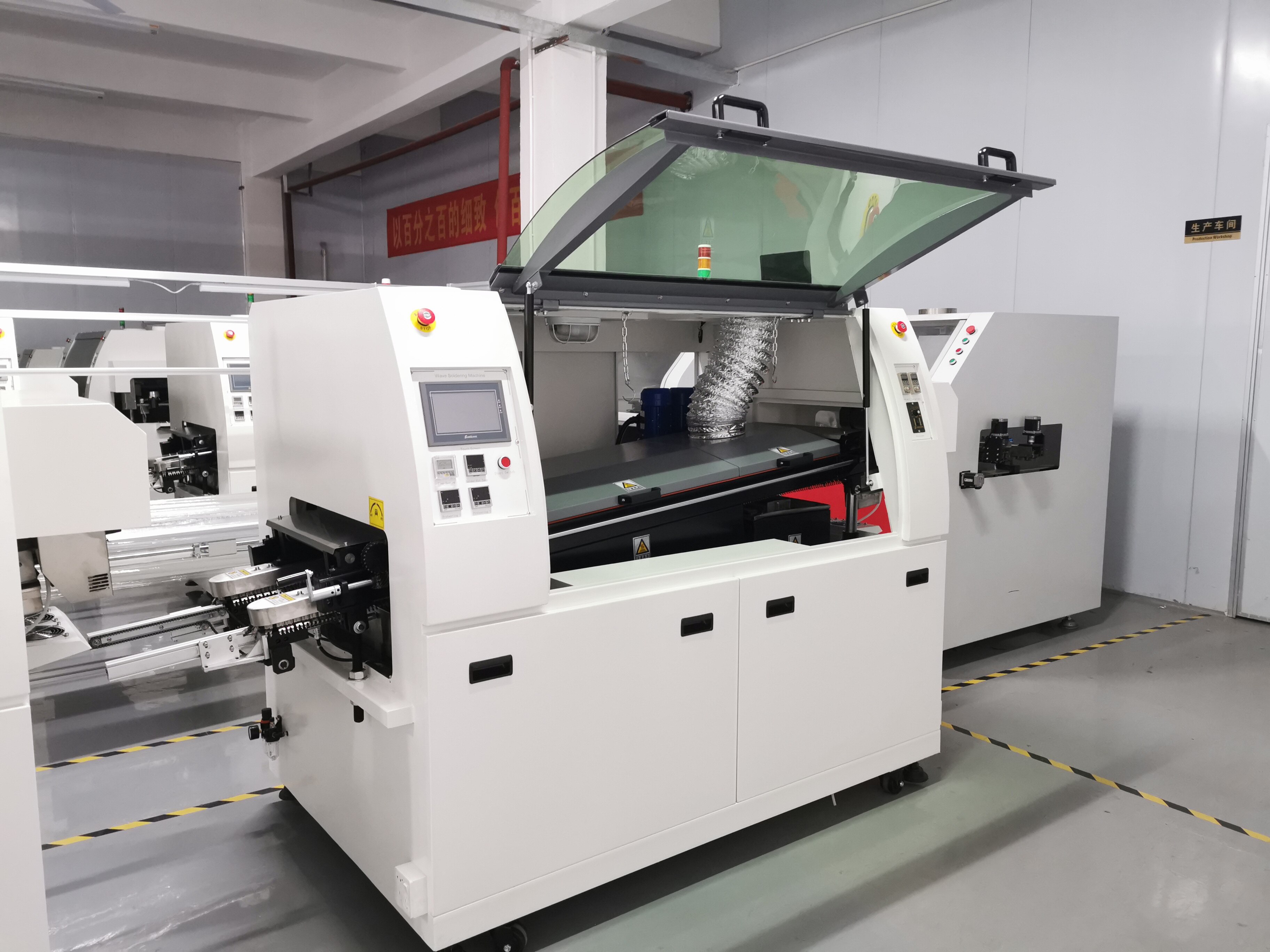Email format error
Email cannot be empty
Email already exists
6-20 characters(letters plus numbers only)
The password is inconsistent
Email format error
Email cannot be empty
Email does not exist
6-20 characters(letters plus numbers only)
The password is inconsistent


Wave Soldering Wonders: Unveiling Automated Efficiency and Pricing
Introduction
In the realm of electronics manufacturing, the deployment of cutting-edge technologies has become paramount, and one such technology that stands out is automated industrial wave soldering machines. These machines streamline the soldering process, offering efficiency and precision. Today, we delve into the intricacies of these marvels, exploring key features and factors influencing the price of the automated industrial wave soldering machine.
Defining the Landscape
Automated industrial wave soldering machines have revolutionised the way electronic components are soldered onto printed circuit boards (PCBs). These machines operate seamlessly, automating the traditionally manual soldering process. As businesses seek to enhance their production lines, the demand for these automated solutions has intensified, prompting a closer look at the associated costs.
Key Features Unveiled
Conveyor System: Navigating Efficiency
At the heart of automated industrial wave soldering machines lies the conveyor system, a pivotal component dictating the pace of the entire process. These automated conveyor systems enhance efficiency by ensuring a continuous flow of PCBs through various soldering stages. Manufacturers keen on optimising throughput often invest in advanced conveyor systems, understanding their impact on the overall cost of automated industrial wave soldering machines.
Fluxing Unit: Precision in Flux Application
The fluxing unit, a critical player in the soldering orchestra, ensures the proper application of flux to PCBs before soldering. This process, essential for clean and reliable solder joints, contributes significantly to the final product's quality. Manufacturers must weigh the benefits of the diverse fluxing units available, with considerations extending beyond cost to include performance and reliability in determining the price of the automated industrial wave soldering machine.
Preheating Zones: Temperature Precision
The preheating zones in these machines play a crucial role in preparing PCBs for the soldering process. Temperature control and stability are paramount here, ensuring optimal conditions for soldering. As businesses evaluate automated industrial wave soldering machine prices, the sophistication of preheating zones becomes a focal point, impacting both cost and the quality of the soldered components.
Solder Wave System: Mastering Melting Precision
Central to the soldering process is the solder wave system, where the magic happens. This system, available in various types, dictates the precision and uniformity of the solder application. Manufacturers navigating the decision-making process must consider the alloy composition and melting point, understanding how these factors influence the automated industrial wave soldering machine price.
Cooling Zones: Preserving Precision
Beyond the soldering action, the cooling zones in these machines ensure that components cool uniformly, preventing defects and damage. The importance of cooling systems cannot be overstated, impacting the reliability and longevity of the soldered components. Businesses evaluating automated industrial wave soldering machine prices must factor in the sophistication of cooling mechanisms for a comprehensive understanding of the investment.

Advantages of Automation: A Multifaceted View
The move towards automated industrial wave soldering machines isn't merely about efficiency; it's about unlocking a spectrum of advantages. From increased efficiency and consistency to a notable reduction in manual labour costs, the benefits extend across operational and financial domains. This shift in soldering technology is not just a cost; it's an investment in the future of electronic manufacturing.
Factors Influencing the Price Landscape
As businesses consider adopting automated solutions, understanding the factors influencing automated industrial wave soldering machine prices is crucial. Machine capacity, level of automation, brand reputation, and additional features all contribute to the overall cost. Manufacturers must strike a balance, aligning their requirements with the available features without overspending on unnecessary functionalities.
Comparing Models and Brands: A Comprehensive Analysis
The market is flooded with options, each boasting unique specifications and performance metrics. A comparative analysis of different models and brands is indispensable for businesses aiming to make informed decisions. By weighing the intricacies of specifications, performance, and pricing variations, manufacturers can navigate the diverse landscape, finding the right fit for their needs without compromising on quality.
Conclusion: Navigating the Wave Soldering Future
In conclusion, the landscape of automated industrial wave soldering machines is dynamic and promising. The investment in these machines goes beyond the initial price tag, encompassing efficiency gains, quality improvements, and a future-ready approach to electronic manufacturing. As technology advances and innovations shape the industry, businesses must carefully consider their options, understanding that the price of the automated industrial wave soldering machine is not just a cost but a strategic investment in the evolving landscape of electronics manufacturing.

